Abstract
The development of powerful and comprehensive medical ontologies that support formal reasoning on a large scale is one of the key requirements for clinical computing in the next millennium. Taxonomic medical knowledge, a major portion of these ontologies, is mainly characterized by generalization and part-whole relations between concepts. While reasoning in generalization hierarchies is quite well understood, no fully conclusive mechanism as yet exists for part-whole reasoning. The approach we take emulates part-whole reasoning via classification-based reasoning using SEP triplets, a special data structure for encoding part-whole relations that is fully embedded in the formal framework of standard description logics.
Full text
PDF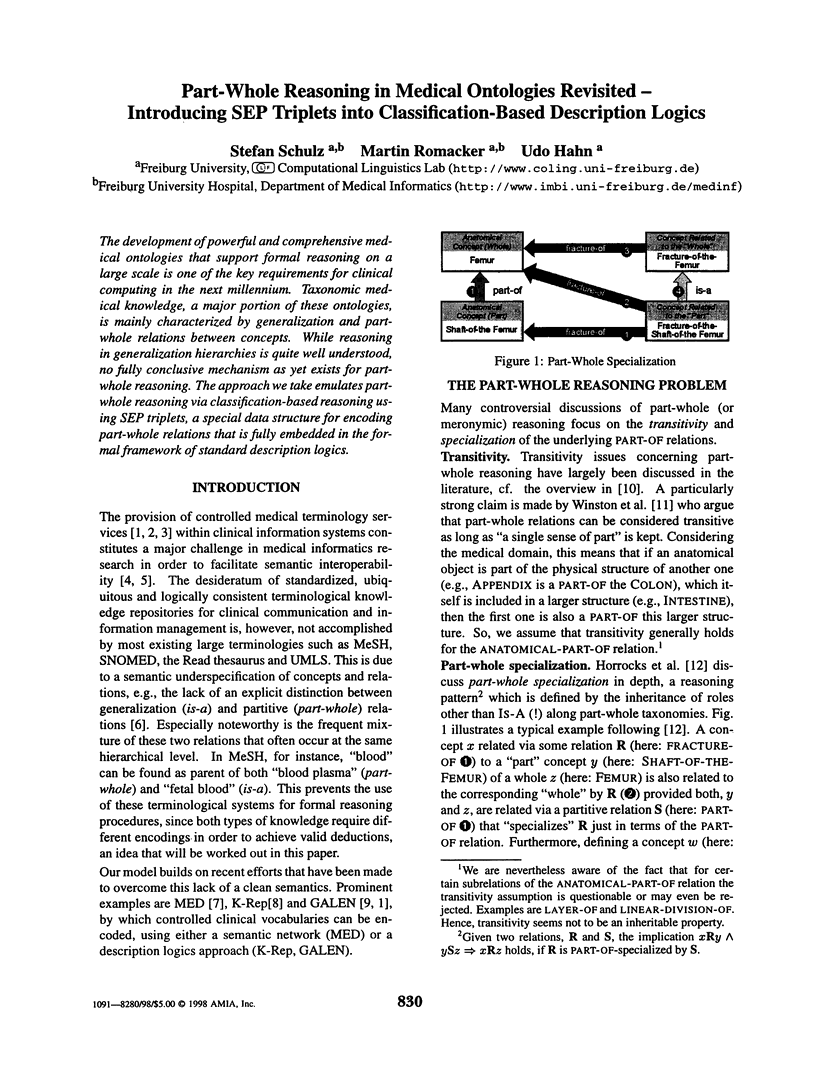
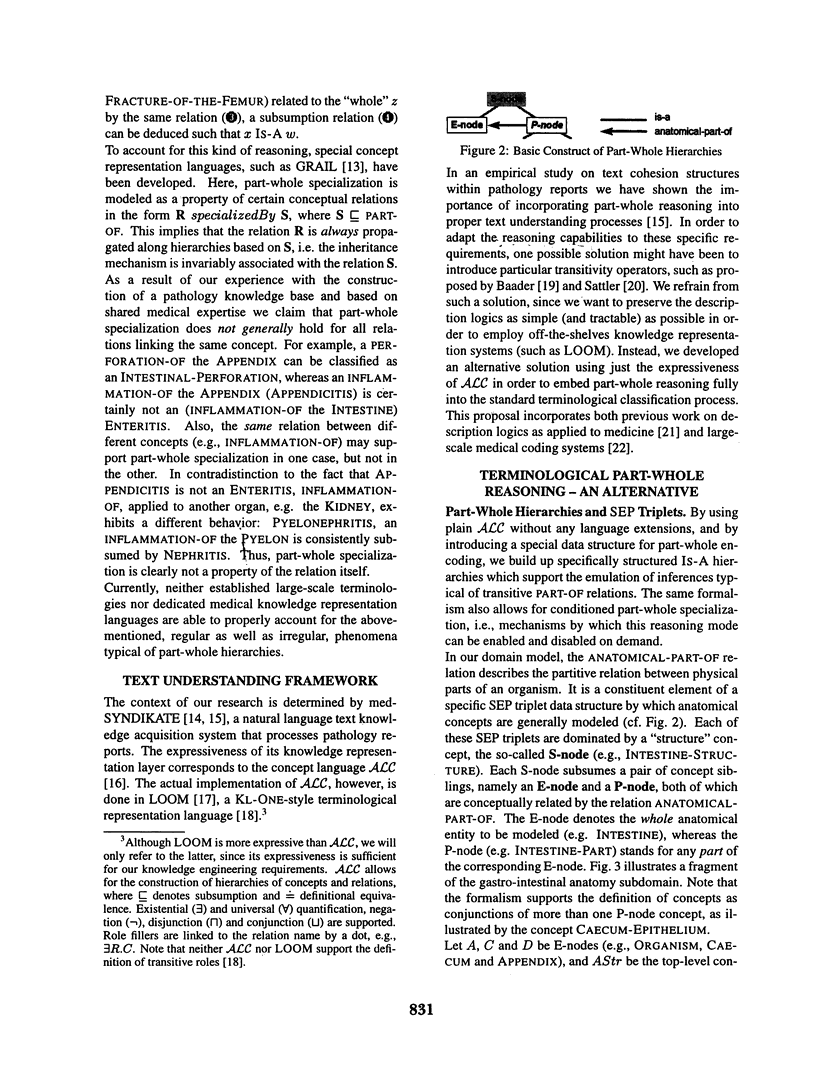
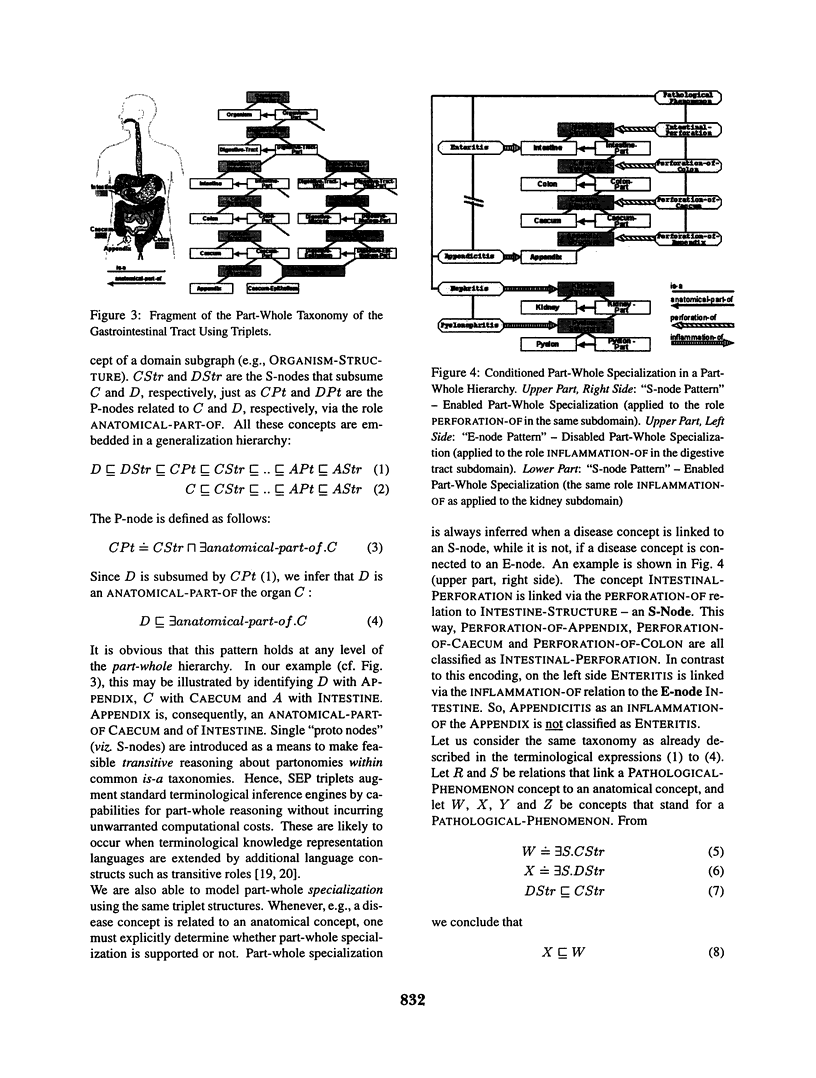
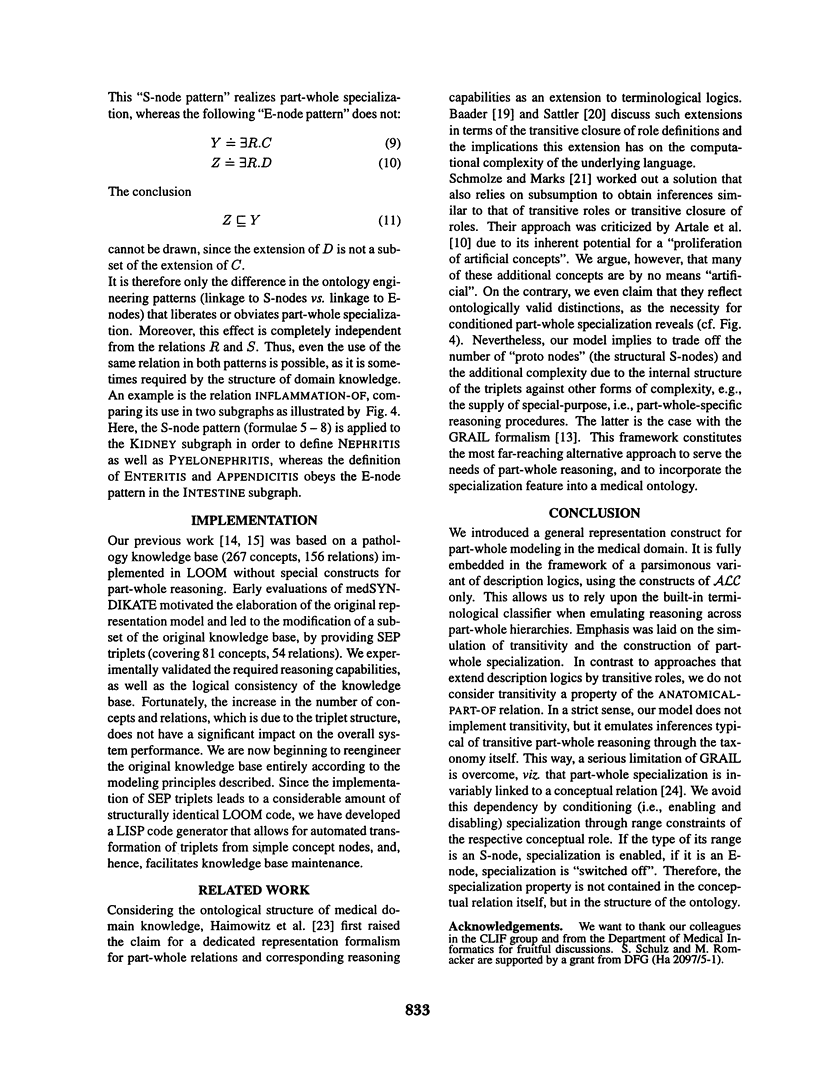
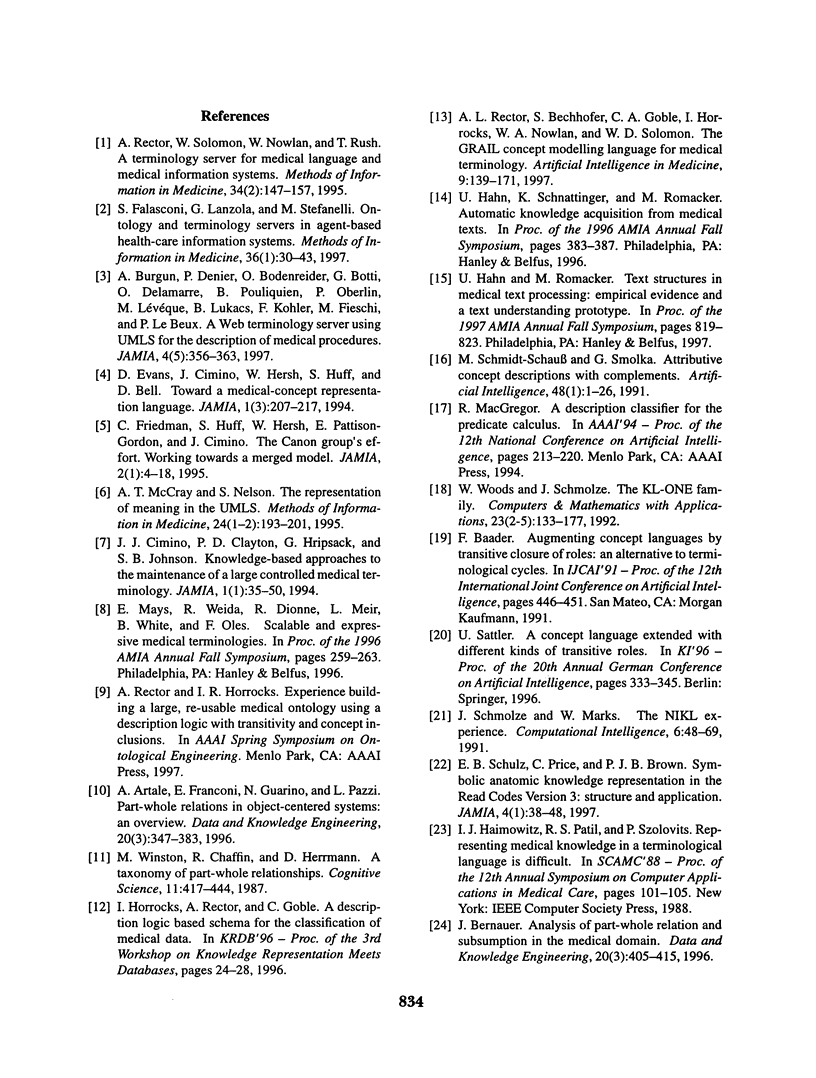
Images in this article
Selected References
These references are in PubMed. This may not be the complete list of references from this article.
- Burgun A., Denier P., Bodenreider O., Botti G., Delamarre D., Pouliquen B., Oberlin P., Lévéque J. M., Lukacs B., Kohler F. A Web terminology server using UMLS for the description of medical procedures. J Am Med Inform Assoc. 1997 Sep-Oct;4(5):356–363. doi: 10.1136/jamia.1997.0040356. [DOI] [PMC free article] [PubMed] [Google Scholar]
- Cimino J. J., Clayton P. D., Hripcsak G., Johnson S. B. Knowledge-based approaches to the maintenance of a large controlled medical terminology. J Am Med Inform Assoc. 1994 Jan-Feb;1(1):35–50. doi: 10.1136/jamia.1994.95236135. [DOI] [PMC free article] [PubMed] [Google Scholar]
- Evans D. A., Cimino J. J., Hersh W. R., Huff S. M., Bell D. S. Toward a medical-concept representation language. The Canon Group. J Am Med Inform Assoc. 1994 May-Jun;1(3):207–217. doi: 10.1136/jamia.1994.95236153. [DOI] [PMC free article] [PubMed] [Google Scholar]
- Falasconi S., Lanzola G., Stefanelli M. Ontology and terminology servers in agent-based health-care information systems. Methods Inf Med. 1997 Jan;36(1):30–43. [PubMed] [Google Scholar]
- Friedman C., Huff S. M., Hersh W. R., Pattison-Gordon E., Cimino J. J. The Canon Group's effort: working toward a merged model. J Am Med Inform Assoc. 1995 Jan-Feb;2(1):4–18. doi: 10.1136/jamia.1995.95202547. [DOI] [PMC free article] [PubMed] [Google Scholar]
- Hahn U., Romacker M. Text structures in medical text processing: empirical evidence and a text understanding prototype. Proc AMIA Annu Fall Symp. 1997:819–823. [PMC free article] [PubMed] [Google Scholar]
- Hahn U., Schnattinger K., Romacker M. Automatic knowledge acquisition from medical texts. Proc AMIA Annu Fall Symp. 1996:383–387. [PMC free article] [PubMed] [Google Scholar]
- Mays E., Weida R., Dionne R., Laker M., White B., Liang C., Oles F. J. Scalable and expressive medical terminologies. Proc AMIA Annu Fall Symp. 1996:259–263. [PMC free article] [PubMed] [Google Scholar]
- Rector A. L., Bechhofer S., Goble C. A., Horrocks I., Nowlan W. A., Solomon W. D. The GRAIL concept modelling language for medical terminology. Artif Intell Med. 1997 Feb;9(2):139–171. doi: 10.1016/s0933-3657(96)00369-7. [DOI] [PubMed] [Google Scholar]
- Rector A. L., Solomon W. D., Nowlan W. A., Rush T. W., Zanstra P. E., Claassen W. M. A Terminology Server for medical language and medical information systems. Methods Inf Med. 1995 Mar;34(1-2):147–157. [PubMed] [Google Scholar]
- Schulz E. B., Price C., Brown P. J. Symbolic anatomic knowledge representation in the Read Codes version 3: structure and application. J Am Med Inform Assoc. 1997 Jan-Feb;4(1):38–48. doi: 10.1136/jamia.1997.0040038. [DOI] [PMC free article] [PubMed] [Google Scholar]



